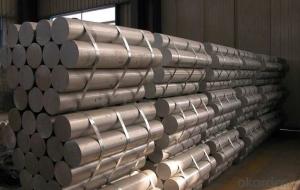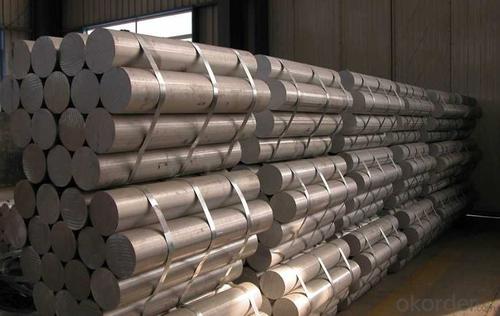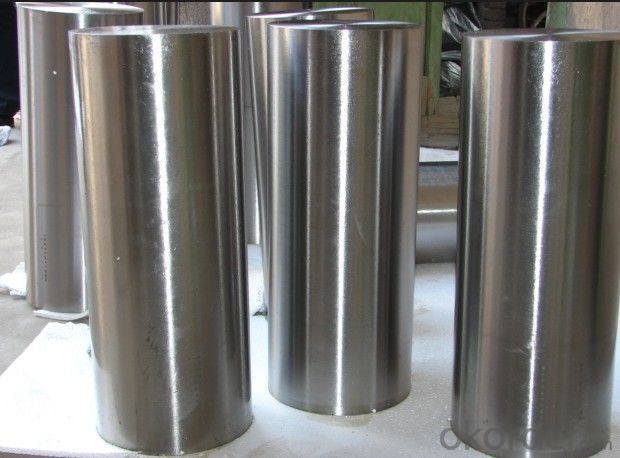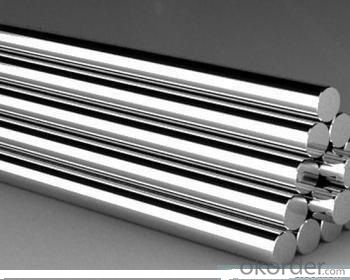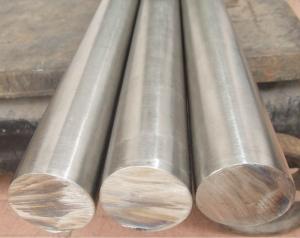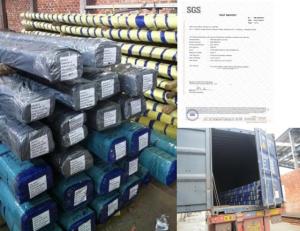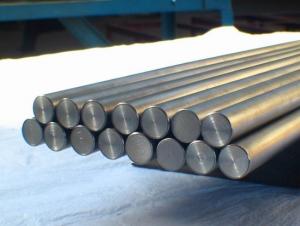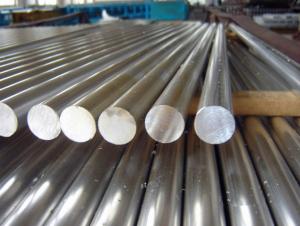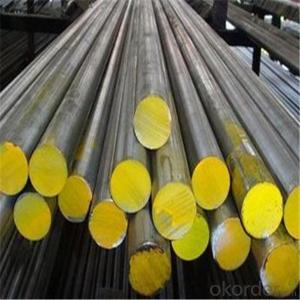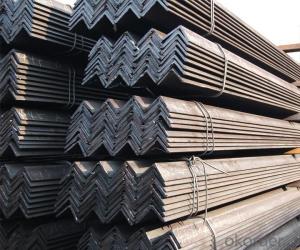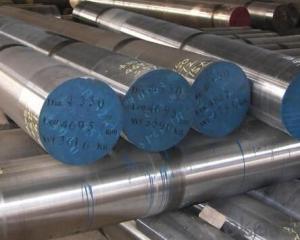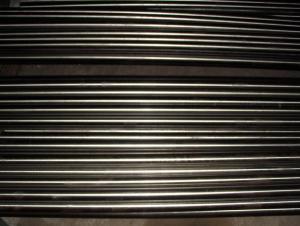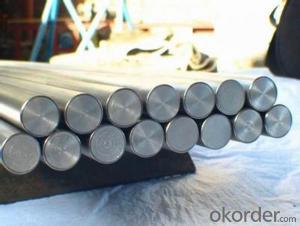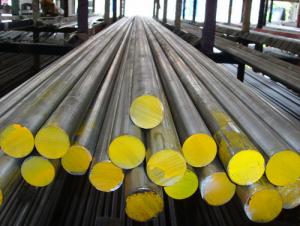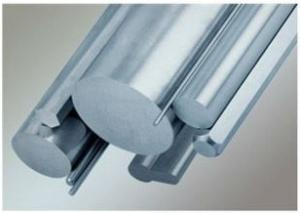Stainless steel round bar, angle bar, flat bar
- Loading Port:
- Tianjin
- Payment Terms:
- TT OR LC
- Min Order Qty:
- 25 m.t.
- Supply Capability:
- 150000 m.t./month
OKorder Service Pledge
OKorder Financial Service
You Might Also Like
Specification
Specifications
1. Material: AISI 201, 202, 304, 304L, 316, 316L, 321, 310S, 410, 416, 420, 430, 431, 904L etc.
2. MOQ: 500 Kg
3. Mill test
Stainless steel round bar, angle bar, flat bar, square bar, hexagon bar, triangle bar:
Products' basic information:
1. standard: ASTM 276
2. length: standard 5.8 meters-6 meters each piece of the bar or according to buyers' request
3. material: AISI 201, 202, 304, 304L, 316, 316L,316ti, 321, 310S, 410, 416, 420, 430, 431, 904L, UNS S32304, UNS S31803, UNS S32205, UNS S32750, UNS S32760, UNS S32550, etc

No.1: stainless steel round bar (two series:black surface& bright surface)
round bar (black surface):
No.2: stainless steel angle bar
No.3: stainless steel flat bar (two series:pickled white surface& polished bright surface)
-flat bar (pickled white surface):
No.4: stainless steel square bar
No.5: stainless steel hexagon bar
Know more about trade...
Payment term: 1. 30% T/T in advance, and the balance against B/L copy
2. 100% irrevocable LC at sight.
Shipment date: Within 15-20 days after advance payment or receipt of LC
Trade term: 1. FOB Shanghai port, China.
2. CIF Discharging port
Guarantee& Service: Mill Test Certificate is supplied with shipment, and Third Part Inspection is acceptable.
Packing: standard export packing (plastic package to prevent water or plywood case to strengthen package)
- Q: Are stainless steel bars resistant to fatigue?
- Yes, stainless steel bars are generally resistant to fatigue due to their high strength and durability. Their unique composition and properties allow them to withstand repeated stress and load cycles without experiencing significant structural damage, making them an excellent choice for applications that require long-term reliability and resistance to fatigue failure.
- Q: What are the different applications of stainless steel bars?
- Stainless steel bars have diverse applications across various industries. They are commonly used in construction for structural supports, reinforcement, and framing due to their high strength and corrosion resistance. In the automotive industry, stainless steel bars are utilized for manufacturing components like exhaust systems, roll cages, and chassis parts. They are also extensively used in the manufacturing of kitchen equipment, appliances, and utensils due to their hygienic properties. Additionally, stainless steel bars find application in the marine industry for shipbuilding, as well as in the aerospace sector for aircraft components.
- Q: What is the typical diameter range of stainless steel bars?
- The typical diameter range of stainless steel bars can vary depending on the specific grade and application. However, in general, stainless steel bars are available in a wide range of diameters. Common diameter sizes for stainless steel bars can range from as small as 1/8 inch (3.175 mm) to as large as 20 inches (508 mm) or more. The specific diameter range will depend on factors such as the intended use of the bar, the manufacturing process, and industry standards. It is important to consult the manufacturer or supplier for the specific diameter range of stainless steel bars required for a particular project or application.
- Q: What are the weight calculations for stainless steel bars?
- The weight calculations for stainless steel bars depend on the dimensions, specifically the length, width, and thickness of the bar. To calculate the weight, you can use the formula: weight = volume × density.
- Q: Can stainless steel bars be used in the automotive industry?
- Yes, stainless steel bars can be used in the automotive industry. Stainless steel bars have several properties that make them suitable for use in this industry. Firstly, stainless steel is highly resistant to corrosion, which is essential for automotive components that are exposed to harsh environmental conditions. This resistance to corrosion ensures that the bars remain strong and durable over time. Secondly, stainless steel bars have excellent mechanical properties, including high strength and toughness. These properties are crucial for automotive applications, as they allow the bars to withstand heavy loads, vibrations, and impacts without deformation or failure. Stainless steel bars can be used for various automotive components such as chassis, roll bars, exhaust systems, and suspension parts. Additionally, stainless steel bars have good heat resistance, making them suitable for parts that are exposed to high temperatures, such as engine components and exhaust systems. They also have excellent formability, making them easy to shape and manufacture into complex automotive parts. Furthermore, stainless steel bars have an aesthetic appeal, which is important for certain automotive components where appearance is a factor, such as trim and decorative elements. Overall, stainless steel bars offer a range of beneficial properties that make them a suitable choice for use in the automotive industry.
- Q: What are the manufacturing processes of stainless steel bars?
- Steel, forging, steel ingot, and electro slag, steel rolling, peeling, cold drawing, straightening, polishing, repair, and measuring the length of the cutting head wear, grinding head, finished product inspection and inspection, packaging and storage process
- Q: Can stainless steel bars be used in outdoor signage?
- Yes, stainless steel bars can be used in outdoor signage. Stainless steel is a highly durable and corrosion-resistant material, making it suitable for outdoor applications. It can withstand various weather conditions, including rain, snow, and UV exposure, without rusting or deteriorating. Stainless steel bars can be used to create sturdy frames or structures for outdoor signs, ensuring their longevity and stability. Additionally, stainless steel can be easily cleaned and maintained, making it a practical choice for outdoor signage that may be exposed to dirt or pollution.
- Q: What is the difference between square and rectangular stainless steel bars?
- The distinction between square and rectangular stainless steel bars lies primarily in their shape and dimensions. Square bars possess equal width and height, resulting in a symmetrical square shape. Conversely, rectangular bars feature disparate width and height measurements, resulting in a longer and narrower shape. When seeking a balanced and symmetrical design, square stainless steel bars are often preferred. They find common application in construction, manufacturing, and architectural projects. Their uniform dimensions render them suitable for applications necessitating stability and structural strength, including support beams, frames, and braces. Conversely, rectangular stainless steel bars are selected when a longer and narrower shape is required. This shape permits a more efficient utilization of material, rendering rectangular bars ideal for applications demanding versatility and customization. They are frequently utilized in the machinery, automotive, and aerospace industries, where they can serve as components, supports, or structural elements. It is crucial to note that both square and rectangular stainless steel bars provide similar advantages in terms of durability, corrosion resistance, and strength. The choice between the two hinges on the specific requirements of the project and the desired aesthetic.
- Q: 2Cr13 what's the use of stainless steel bars?
- Commonly known as stainless iron, low density, hardness, not easy to rust, we used this material made low pressure storage tank, also made big pipe fittings, other uses are not clear.
- Q: Can stainless steel bars be used in aerospace applications?
- Indeed, aerospace applications can make use of stainless steel bars. Stainless steel, renowned for its versatility and durability, boasts remarkable resistance to corrosion and a commendable strength-to-weight ratio, rendering it a fitting choice for a myriad of aerospace components. Aircraft structures, engine parts, landing gear, and fasteners are among the numerous applications commonly employing stainless steel. Particularly, stainless steel bars frequently find utility in scenarios necessitating outstanding strength and durability, exemplified by their presence in wing spars, fuselage frames, and engine mounts. Moreover, stainless steel's ability to withstand high temperatures and extreme weather conditions further solidifies its status as a dependable option for aerospace applications.
Send your message to us
Stainless steel round bar, angle bar, flat bar
- Loading Port:
- Tianjin
- Payment Terms:
- TT OR LC
- Min Order Qty:
- 25 m.t.
- Supply Capability:
- 150000 m.t./month
OKorder Service Pledge
OKorder Financial Service
Similar products
Hot products
Hot Searches
Related keywords
